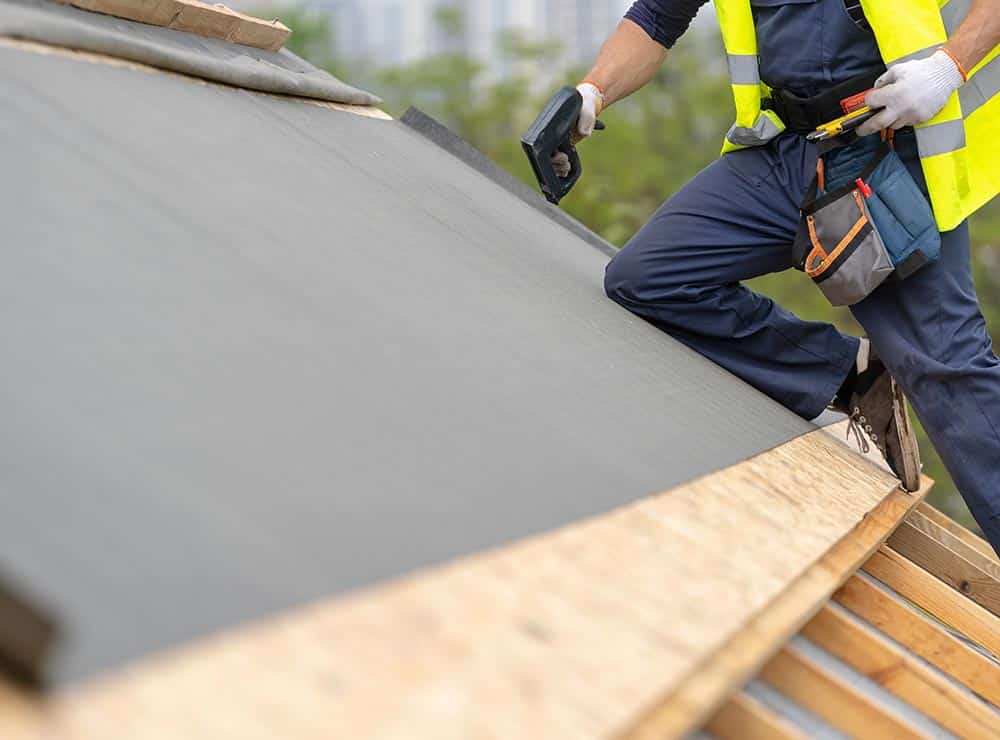Don’t Let Your Roof Underlayment Be Underwhelming: Choosing the Right One for Your Project

Your roof is your home’s first line of defense against the elements. It shields you from rain, snow, sun, and wind. But what protects your roof itself? That’s where roof underlayment comes in.
Roof underlayment, sometimes referred to as roof felt, is a water-resistant barrier installed directly on top of the roof deck (sheathing) before the shingles or other roofing materials are applied. It acts as an extra layer of protection for your home, safeguarding it from:
- Water infiltration: Wind-driven rain or ice dams can cause leaks under your shingles. Underlayment helps prevent this water from reaching the roof deck and potentially causing interior damage.
- Valley leaks: Valleys, the areas where two sloping roof sections meet, are particularly prone to leaks. Underlayment provides an extra layer of defense in these vulnerable areas.
- Blow-through: Strong winds can sometimes lift shingles. Underlayment helps minimize the risk of wind blowing through the gaps and exposing the roof deck.
Types of Roof Underlayment:
There are two main types of roof underlayment:
- Asphalt Felt: A traditional and affordable option, asphalt felt is made from organic materials saturated with asphalt. However, it can absorb moisture, tear easily, and degrade over time.
- Synthetic Underlayment: Made from non-woven plastic fibers, synthetic underlayment is more durable and tear-resistant than asphalt felt. It also offers better moisture resistance and a longer lifespan.
Choosing the Right Underlayment for Your Roof:
The best type of underlayment for your roof will depend on several factors, including:
- Roof pitch: Steeper roof pitches require a higher level of water resistance. In such cases, a synthetic underlayment like those offered by Certainteed, GAF, Owens Corning Roofing, Tamko, or Fabral might be a better option than asphalt felt.
- Climate: If you live in an area with severe weather conditions, such as high winds or heavy rain, a synthetic underlayment is a wise investment due to its increased durability.
- Budget: Asphalt felt is generally less expensive than synthetic underlayment. However, keep in mind that the durability of synthetic underlayment can save you money on roof repairs in the long run.
Here are some additional tips for choosing and using roof underlayment:
- Match the underlayment to the roof deck material: Ensure compatibility between your chosen underlayment and the type of roof deck (plywood, oriented strand board (OSB), etc.) you have.
- Follow manufacturer’s installation instructions: Different underlayment products may have specific installation requirements. Be sure to follow the manufacturer’s instructions carefully to ensure optimal performance.
- Overlap properly: Overlap the underlayment according to the manufacturer’s recommendations to create a watertight seal.
- Use ice and water shield in vulnerable areas: Consider using a self-adhering ice and water shield membrane around eaves, valleys, and chimneys for extra protection against leaks in these high-risk areas.
By choosing the right roof underlayment and installing it properly, you can help ensure your roof provides lasting protection for your home.
